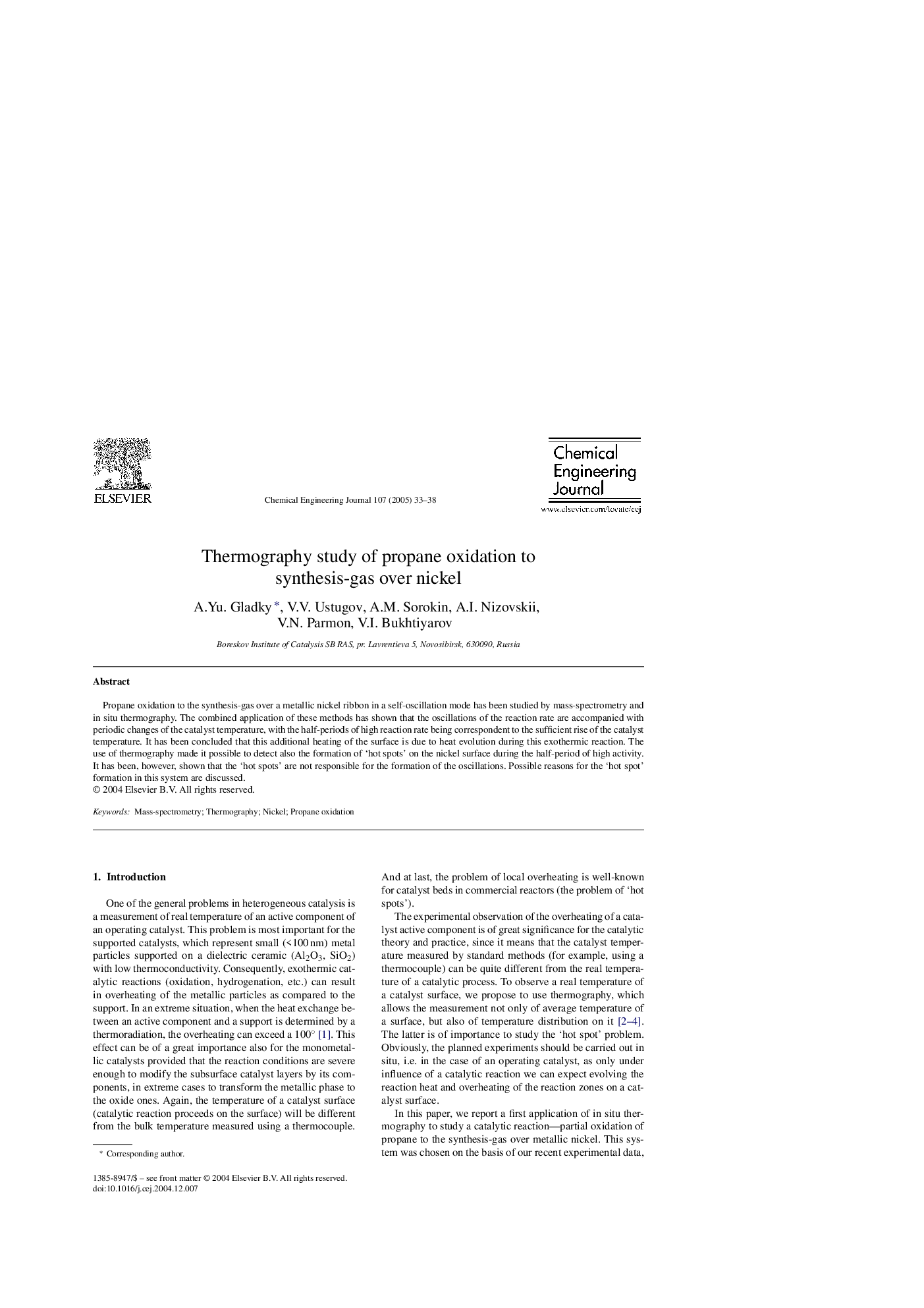| Article ID | Journal | Published Year | Pages | File Type |
|---|---|---|---|---|
| 9623852 | Chemical Engineering Journal | 2005 | 6 Pages |
Abstract
Propane oxidation to the synthesis-gas over a metallic nickel ribbon in a self-oscillation mode has been studied by mass-spectrometry and in situ thermography. The combined application of these methods has shown that the oscillations of the reaction rate are accompanied with periodic changes of the catalyst temperature, with the half-periods of high reaction rate being correspondent to the sufficient rise of the catalyst temperature. It has been concluded that this additional heating of the surface is due to heat evolution during this exothermic reaction. The use of thermography made it possible to detect also the formation of 'hot spots' on the nickel surface during the half-period of high activity. It has been, however, shown that the 'hot spots' are not responsible for the formation of the oscillations. Possible reasons for the 'hot spot' formation in this system are discussed.
Related Topics
Physical Sciences and Engineering
Chemical Engineering
Chemical Engineering (General)
Authors
A.Yu. Gladky, V.V. Ustugov, A.M. Sorokin, A.I. Nizovskii, V.N. Parmon, V.I. Bukhtiyarov,
